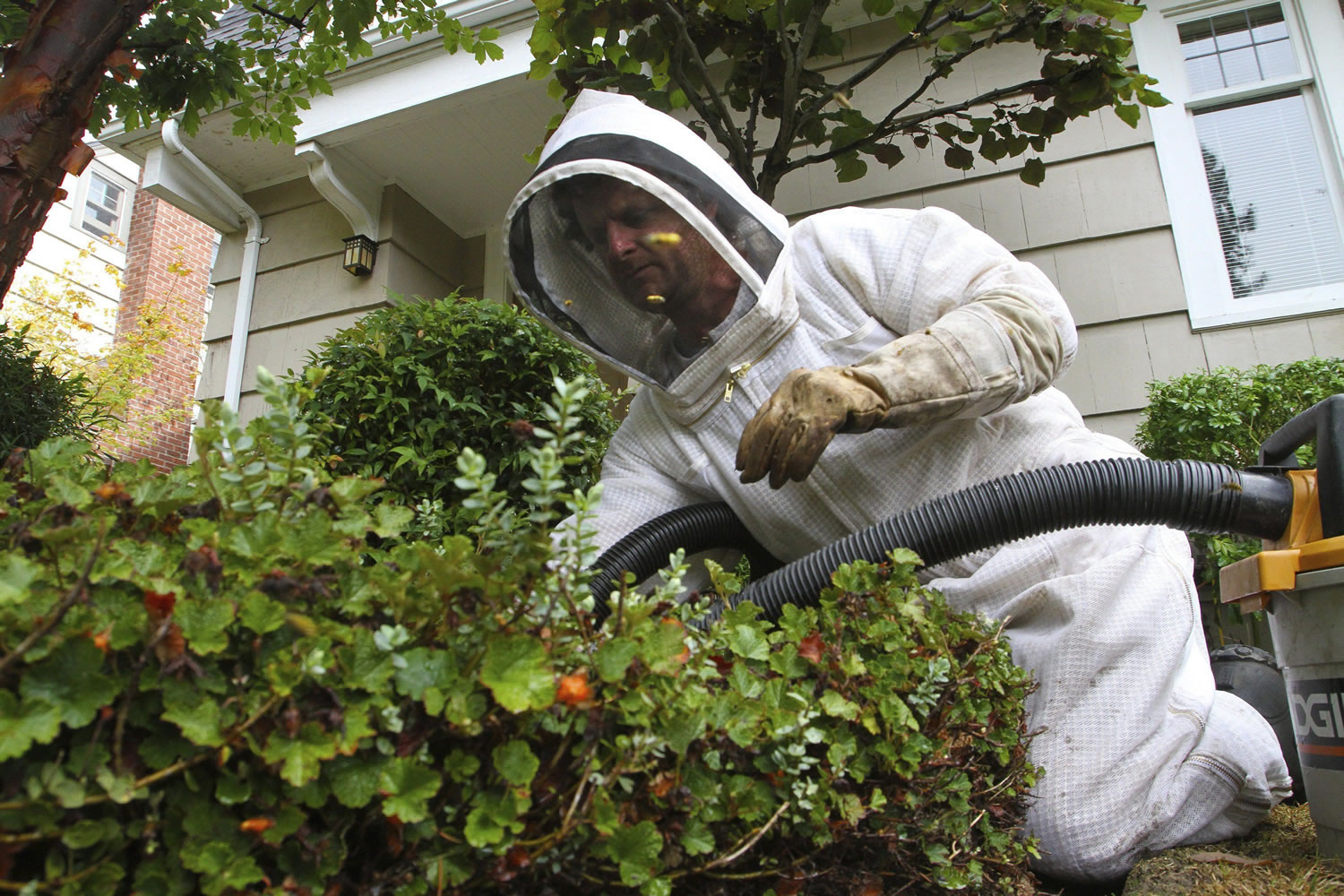SEATTLE — Linda Hamilton would have preferred peaceful coexistence. But the yellow jackets at her home attacked the crew that takes care of her yard, stinging one man a dozen times.
So she reluctantly called in a strike in the form of Keith Glatzer, owner of the Edmonds-based Wild Bee Co. Glatzer practices an eco-friendly form of pest control, using a vacuum to remove wasps instead of dousing them with chemicals.
“I’ve been super busy this year,” he said last week, as he suited up in full beekeeper regalia before advancing on the two ground-nesting colonies in Hamilton’s front yard, in Seattle’s Laurelhurst neighborhood. “I’m seeing a lot more colonies, and sometimes multiple colonies in a single house.”
It turns out that Washington’s human inhabitants aren’t the only species benefiting from one of the most splendid summers in years. The warm, sunny weather has also spawned a bumper crop of yellow jackets and other wasps in many parts of the state.



